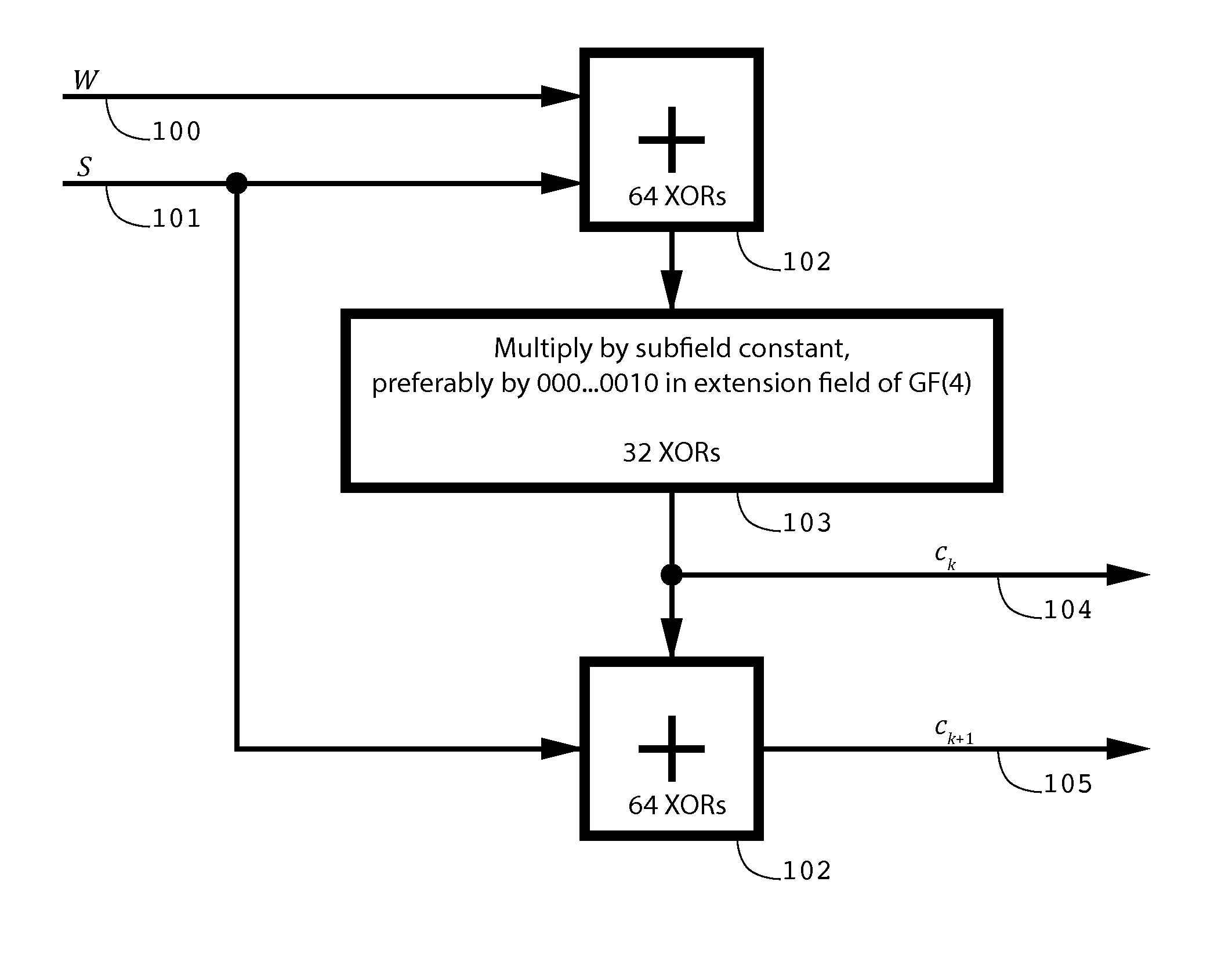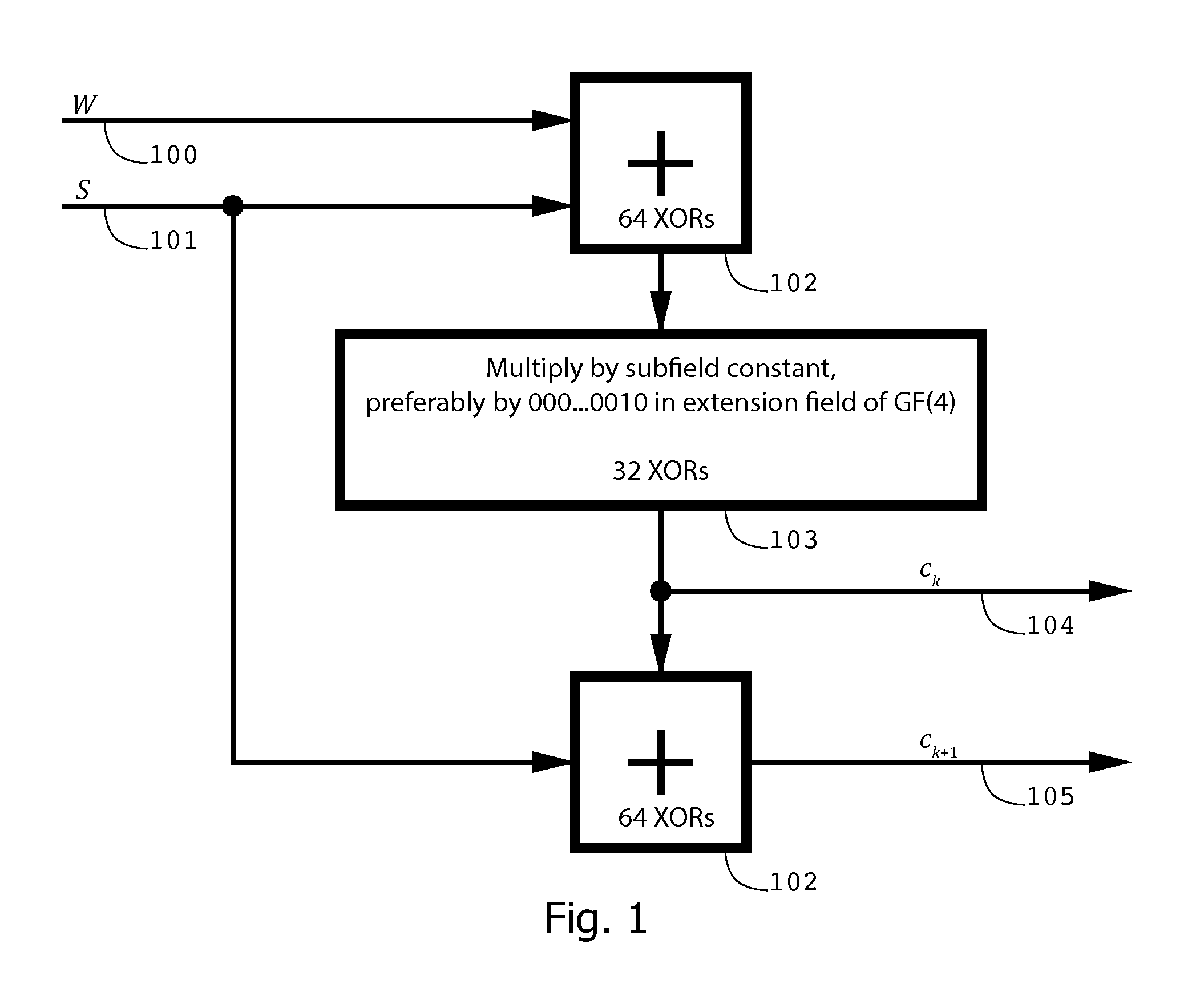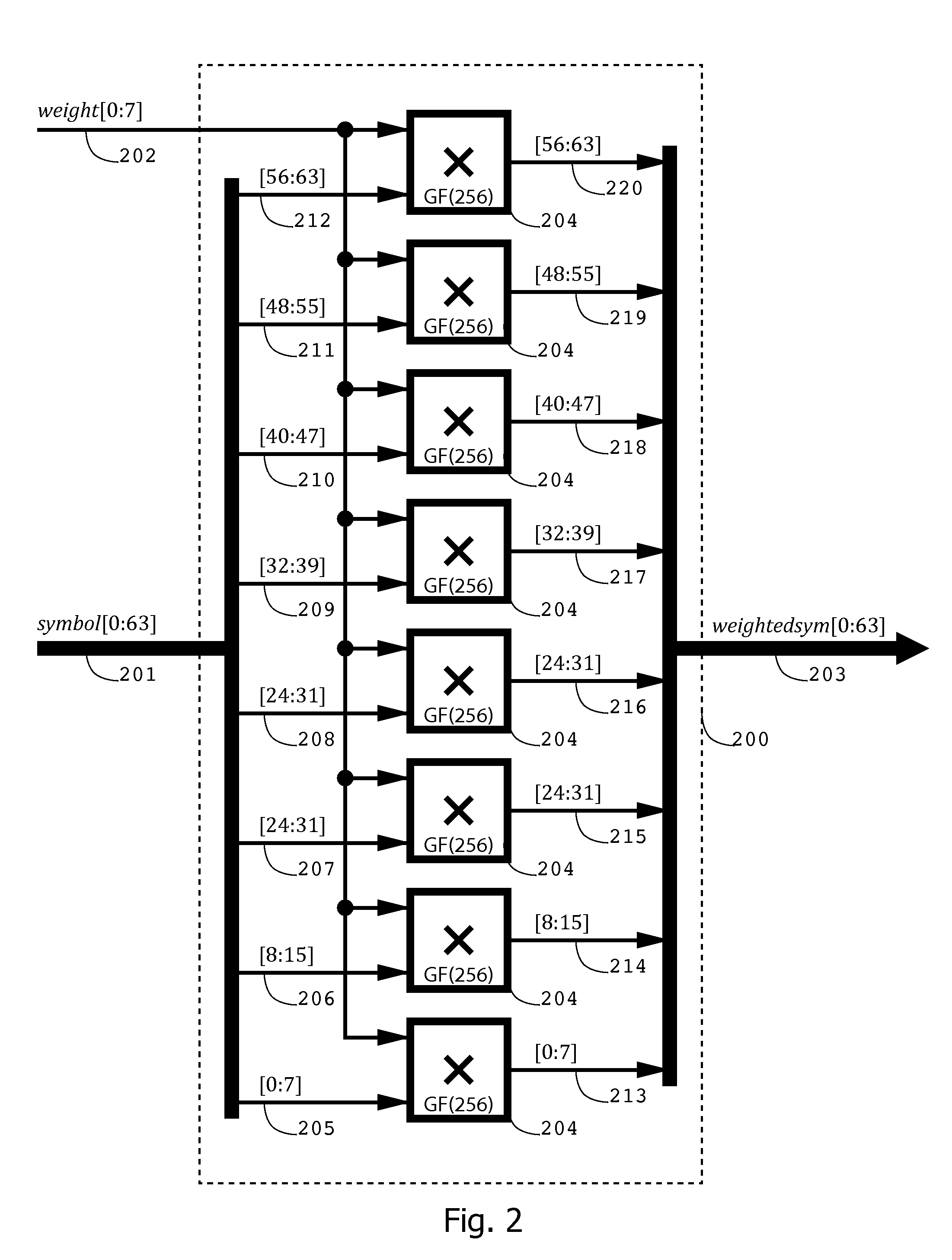Error Correction Coding Using Large Fields
a large field and error correction technology, applied in the field of data error correction coding, can solve the problems of two types of decoder failures of primary concern, uncorrectable errors, and the inability of prior art decoders to properly decode the codeword, and achieve the effect of small probability of decoding failur
- Summary
- Abstract
- Description
- Claims
- Application Information
AI Technical Summary
Benefits of technology
Problems solved by technology
Method used
Image
Examples
case b.4
[0074]i: In the case that associated weights are pre-assigned such that aj=wj−1,
wiA+S=ej(1+wj−1wi).
If ej≈0, a solution for the pre-assigned weight of the second error is provided by
wj=(wiS+W) / (wiA+S).
[0075]Case B.4.ii: In this case, associated weights are pre-assigned with aj=wj2, so
wiW+A=wjej(wi+wj).
If ej≈0, a solution for the pre-assigned weight of the second error is provided by
wj=(wiW+A) / (wiS+W).
[0076]If the assumption of two errors is correct, a pre-assigned weight associated with the location of the second error is determined in either case in step 807. If a set of preferred weights is contained within a subfield, the pre-assigned weight can be determined and checked through a simplified subfield division and range checking as described in conjunction with FIG. 3 above. The viability and range checking of the determined location is performed in step 808. For each first error location i, the location of the second error, j, is required to be in the range i809.
[0077]The method d...
PUM
 Login to View More
Login to View More Abstract
Description
Claims
Application Information
 Login to View More
Login to View More - R&D
- Intellectual Property
- Life Sciences
- Materials
- Tech Scout
- Unparalleled Data Quality
- Higher Quality Content
- 60% Fewer Hallucinations
Browse by: Latest US Patents, China's latest patents, Technical Efficacy Thesaurus, Application Domain, Technology Topic, Popular Technical Reports.
© 2025 PatSnap. All rights reserved.Legal|Privacy policy|Modern Slavery Act Transparency Statement|Sitemap|About US| Contact US: help@patsnap.com



